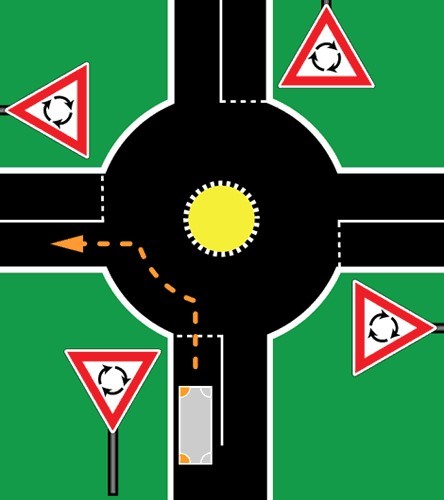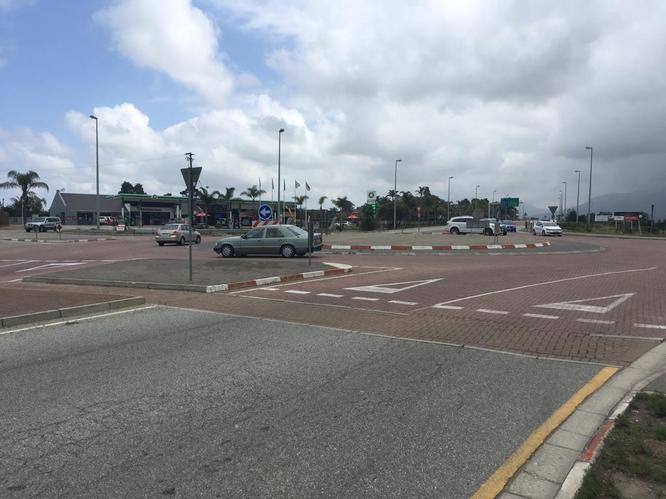MOTORING NEWS - Confusion reigns supreme when it comes to negotiating circles.
So much so that I, too, started to doubt my own know-how when approaching one of the many circles in George - compelling me to go digging for the truth. And what a mission that turned out to be.
After approaching a number of role players in the traffic industry, I was still not completely satisfied that I had the circle issue down pat. First I spoke to Western Cape traffic chief Kenny Africa.
He said the law states that you must always yield to traffic on your right, regardless of it being a big or small circle.
This was confirmed by Lafras Boesak of the George Municipality's traffic department. But I still had my doubts, so I contacted Layton Beard, spokesperson of the Automobile Association of South Africa. He confirmed that the law states you have to yield to vehicles on your right, but added that a circle is there for vehicles to reduce speed and ensure better traffic flow.
He stressed that people should be more tolerant towards each other. If the traffic is building up at a small circle, it will not hurt to take turns to drive using it as four way stop. Just be tolerant.
Size does matter
According to the Automobile Association, a traffic circle is classified as large when it has a minimum diameter of about 16 metres and a 1,5 to 2-metre flattened curb which allows heavy vehicles to drive onto a small section of the circle.
A mini-circle is normally not more than seven to 10 metres in diameter and the entire circle is mountable for heavy vehicles. Arrive Alive Further investigation brought me to Arrive Alive, and I found their information to be the most user-friendly and practical. According to Arrive Alive, small or mini circles should be approached differently to big circles such as the one in York Street.
For the purpose of this article, we will describe the use of single lane circles versus double lane circles as stipulated by Arrive Alive.
Negotiating a mini-circle
Yield sign The yield at a mini-circle regulatory sign R2.2 imposes a mandatory requirement that drivers of vehicles approaching a mini-circle shall yield right of way to any vehicle which will cross any YIELD LINE marking RTM2 at such junction before them, and which, in the normal course of events, will cross the path of such driver's vehicles, and that the driver shall move in a clockwise direction in such junction and attempt not to encroach on the mini-circle.

 The circle at Van Kervel School. All the photographs were taken in George by Wessel van Heerden.
The circle at Van Kervel School. All the photographs were taken in George by Wessel van Heerden.
In plain English, this means that the first vehicle to cross the line has the right of way. This works in much the same way as a four-way stop. Should two vehicles cross the line at the same time, yield to the right.
Right of way

Right of way Slow down and give way to other vehicles that cross any yield line before you do. Proceed in a clockwise direction around the painted island, without driving on it. In the example above, Vehicle 2 has the right of way even though Vehicle 1 is to the right. This is because Vehicle 2 has crossed the line first.
When approaching a mini-circle one should indicate your desired direction of travel before entering the circle.
Turning right

Indicate with the right turn signal before entering the circle so that other traffic is aware of where you want to exit.
Turning left

Indicate with the left turn signal before entering the circle so that other traffic is aware of where you want to exit.
Proceeding straight on

When proceeding straight it is not necessary to indicate.
Two-lane traffic circle
In a two-lane circle, the vehicle on the left must always yield to the vehicle on the right. The driver on the right must signal and use caution when leaving the circle and crossing through the outside lane.

 The two-lane circle on the N2 en route to Victoria Bay from George
The two-lane circle on the N2 en route to Victoria Bay from George
In the above diagram:
• B and C must yield to A. n E must yield to D while F and D proceed together.
• H must yield to G.
• Traffic in the lanes indicated in red, must yield to traffic in the lanes indicated in yellow.
• Traffic entering the circle must yield to traffic already in the circle.
• Before you leave the circle, use your left-turning signal to warn other drivers of your intention.
• It is recommended that for safety, entry into the left-hand lane of the traffic circle be used mainly when intending to exit at the first available exit point. n If you intend to proceed beyond the second exit, it is recommended that you use the righthand lane.
'We bring you the latest Garden Route, Hessequa, Karoo news'

















